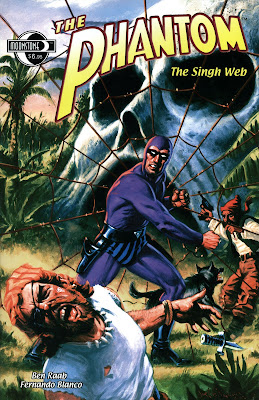In 1958, the New York Yankees avenged their 1957 World Series loss to the Milwaukee Braves by winning Game 7 at County Stadium. The NFL Championship went to the Baltimore Colts in a 23-17 overtime thriller over the New York Giants, in the game that is generally credited with popularizing professional football, which up till that game was considered second fiddle to college gridiron. The top song that year was Danny and the Juniors' At the Hop, while the #1 TV show was Gunsmoke.
In 1958, Jack Schiff was not the credited editor in the Batman magazines; he did not assume that title until March of 1959. However, according to many sources, Schiff was the de facto editor of the Batman from well before his name appeared in the indicia.
In Batman #113, Batman becomes the Superman of Planet X (Zur-En-Arrh):

Status: True aliens (two races). One race is human-sized and multi-colored for two Klaatus, while the other is human sized and Caucasian (five Klaatus for the Batman of Zur-En-Arrh).
In Batman #116, Batman encounters the winged Bat-people while in another dimension:

Status: True aliens, slightly smaller than humans and winged; five Klaatus. The second race of aliens is human-sized and Caucasian in color; only one Klaatu. Although the story takes place in another dimension, it's also on another planet.
In Batman #117, a crook gets assistance from an alien:

Status: True alien, human-sized and green. One Klaatu.
In Detective #251, Batman himself turns out to be an alien:

Status: Fake alien (both Batman and the other guy). This was a plot by gangsters to discredit Batman with the public by making them believe he was from another planet.
In Detective #256, Batman and Robin are imprisoned on another planet:

Status: True aliens, two different races. One race is human-sized and green: one klaatu. The other race is human-sized and Caucasian.
In Detective #256, Batman encounters two aliens (one a lawman and the other a crook) from the future.

Status: True aliens, human-sized and pale blue in color. Four Klaatus for aliens from the future.
In Detective #260, Batman competes in the Olympic Games of Space:

Status: True aliens (several species), all human-sized with several different colors. Three Klaatus for the Olympics mention.
Comments: 1958 was another big year for the aliens.
Batman #113: True aliens (two races); one is human-sized and multi-colored while the other is human-sized and Caucasian.
Batman #116: True aliens (two races); one is smaller than human-sized and winged, while the other is human-sized and Caucasian.
Batman #117: True aliens, human-sized and green.
Detective #251: Fake aliens.
Detective #256: True aliens, human-sized and pale blue in color.
Detective #260: True aliens (several races); all are human-sized and there are several different colors.
Totals: Five stories with aliens, one story with fake aliens.
1959:
Detective #263: True alien, green and human-sized
Detective #270: True alien, green and giant-sized
Batman #124: Not a true alien, robot
Batman #125: True aliens, caucasian and human-sized
Batman #128: True aliens (two separate species), orange and human-sized and purple-red and human sized.
Totals: Four stories involving true aliens, one story with an alien robot
1960:
Batman #130: Fake aliens
Batman #132: Fake aliens
Batman #136: True aliens, yellow and human-sized
Detective #277: True alien, orange and human-sized
Detective #279: Not a true alien, rather alien robot and alien beast
Detective #282: True aliens (two races): one orange and one green, both human-sized
Detective #283: True alien, white and human-sized
Overall for the year: Four stories with true aliens, one with an alien robot and an alien beast, and two stories with fake aliens.
1961:
Batman #137: True alien, white and human-sized and true aliens, yellow and human-sized (two separate stories).
Batman #140: Superman appearance; not counted in the tabulation, and true aliens, green and human-sized.
Batman #142: True alien, orange and human-sized.
Batman #143: Not a true alien, an alien beast.
Batman #144: True aliens, yellow and human-sized.
Detective #287: True aliens, one white and the other yellow, both slightly smaller than humans.
Detective #291: Not a true alien, an alien beast.
Detective #292: Superman cameo, not counted in the tabulation.
Detective #293: True aliens, pink and oversized.
Detective #295: True aliens, yellow and human-sized.
So in total we have 8 stories with true aliens (counting both stories in Batman #137), two stories with alien beasts and two Superman stories.
1962:
Detective #299: True aliens, several, green or white, human-sized.
Detective #303: Fake aliens.
Batman #148: True aliens, green and human-sized
Detective #305: True alien, orange and human-sized
Batman #152: Fake alien.
Three real aliens, two fake aliens.
1963-1964:
Batman #153: True aliens, green.
Batman #153: True aliens, multi-colored.
Batman #156: Fake alien (dream sequence)
Detective #320: No alien visible but implied.
Batman #160: Fake Alien
Two real aliens, two fake, one not seen.
 The bloodthirsty Singh Brotherhood are the Phantom's oldest foes. Deep within the Bengali jungle lies their most revered and evil treasure, THE SINGH WEB! It's diabolical secret simmered quietly until the stunning and ambitious archeologist Dr. Veronica Roberts got her mitts on it. Now, it's rest disturbed and it's terrible supernatural force placing the entire world at risk, the Phantom must embark on an adventure that will lead him through the streets of New York to the gates of Shaolin! Unfortunately, Hassan Singh, current head of the pirate empire, is a step ahead of him.
The bloodthirsty Singh Brotherhood are the Phantom's oldest foes. Deep within the Bengali jungle lies their most revered and evil treasure, THE SINGH WEB! It's diabolical secret simmered quietly until the stunning and ambitious archeologist Dr. Veronica Roberts got her mitts on it. Now, it's rest disturbed and it's terrible supernatural force placing the entire world at risk, the Phantom must embark on an adventure that will lead him through the streets of New York to the gates of Shaolin! Unfortunately, Hassan Singh, current head of the pirate empire, is a step ahead of him.






























































